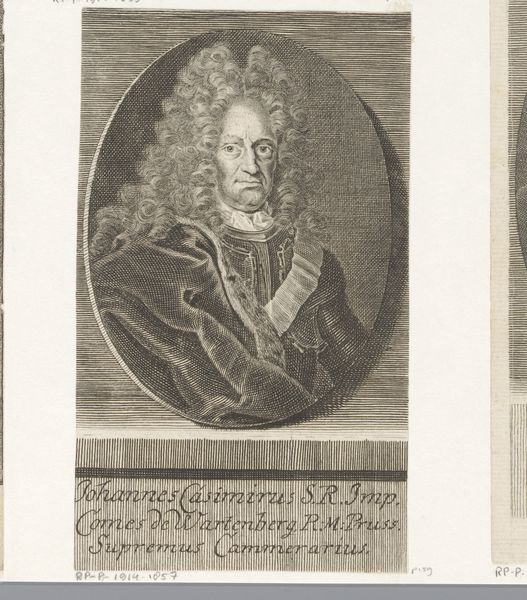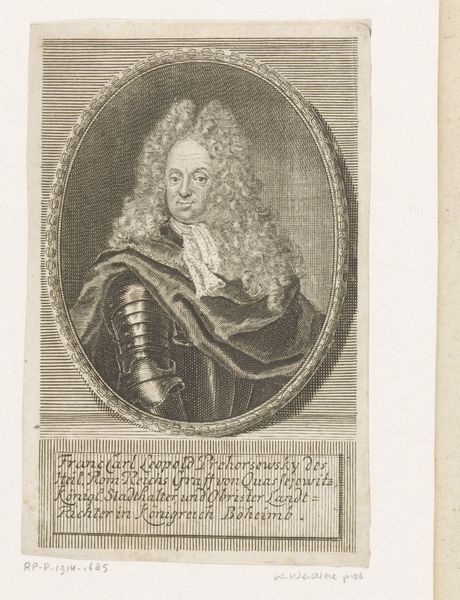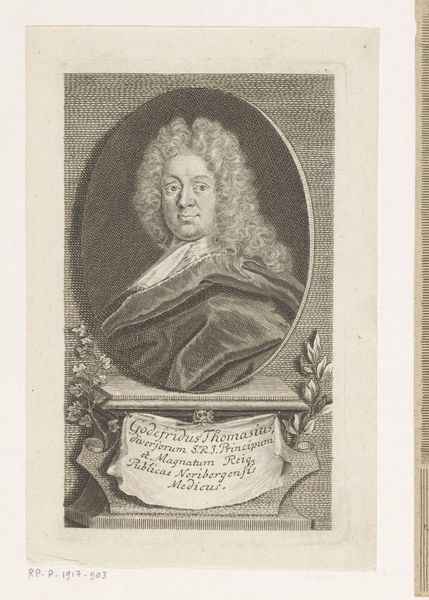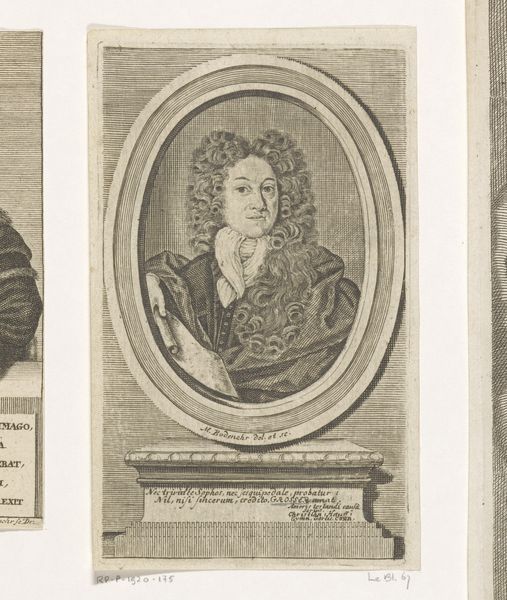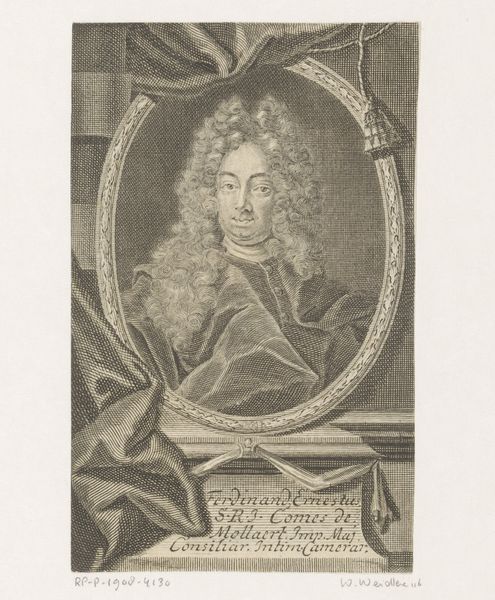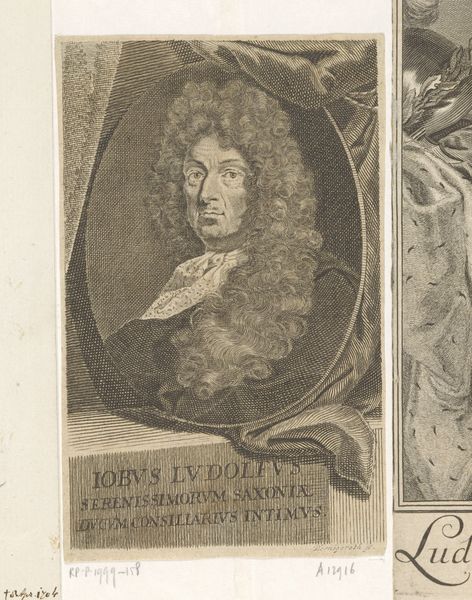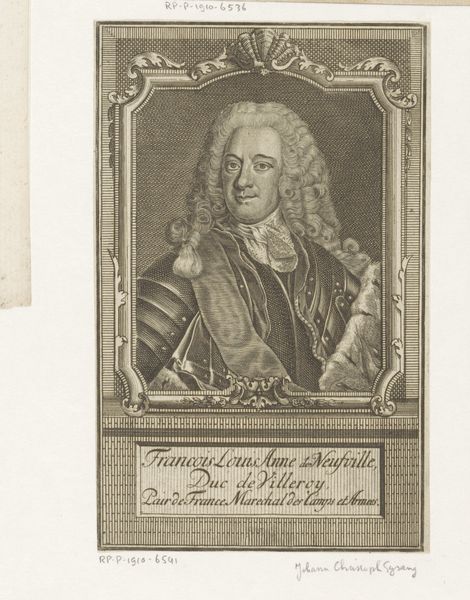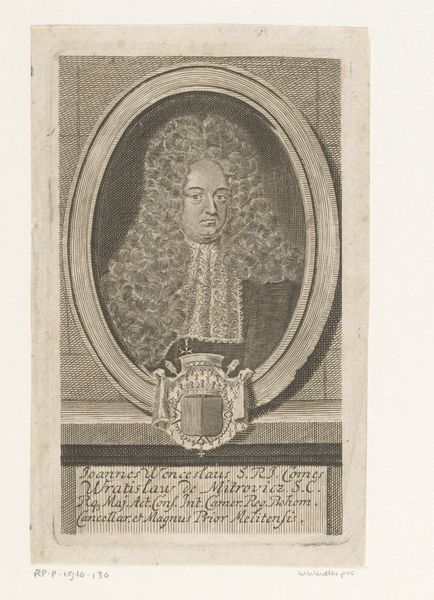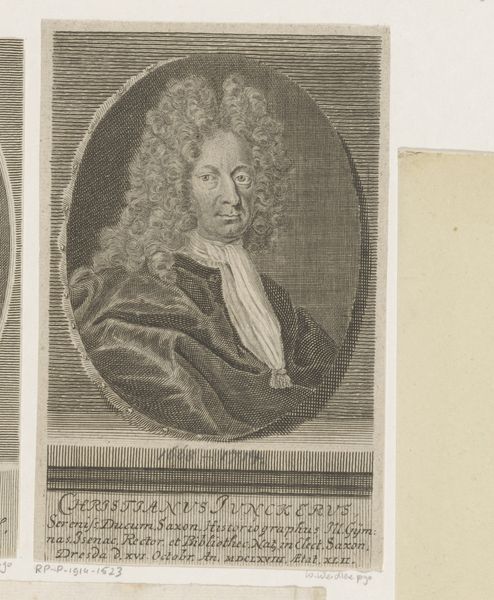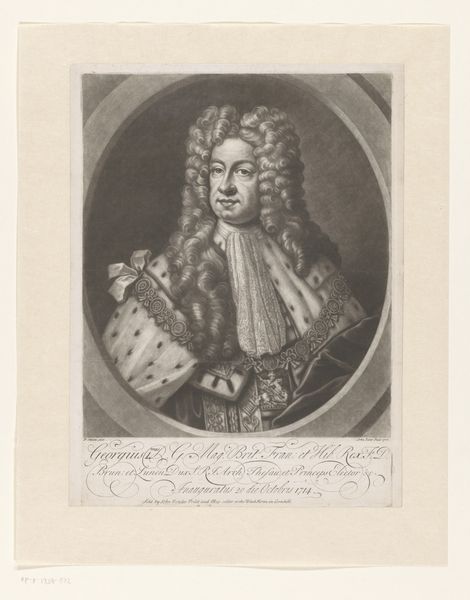
engraving
#
portrait
#
baroque
#
engraving
Dimensions: height 168 mm, width 92 mm
Copyright: Rijks Museum: Open Domain
This portrait of Matthias Johann von der Schulenburg was made by Martin Bernigeroth, likely in the early 18th century, using engraving techniques. Bernigeroth expertly manipulated metal plates to create this image. Engraving involves meticulously incising lines onto a metal plate, often copper, using a tool called a burin. The incised lines hold ink, and when pressed against paper, transfer the image. Look closely, and you can see the network of fine lines that define Schulenburg’s features, armor, and elaborate wig. The depth and density of these lines create a sense of volume and texture. Engraving like this was a highly skilled, labor-intensive process, demanding precision and control. It was also a key means of disseminating images, ideas, and information at the time. The fact that Schulenburg, a military figure, had his portrait produced in this way speaks to the rising status of individuals within a burgeoning print culture. Considering the materials, making, and context helps us understand the cultural and social significance of what might otherwise seem like just another portrait.
Comments
No comments
Be the first to comment and join the conversation on the ultimate creative platform.

